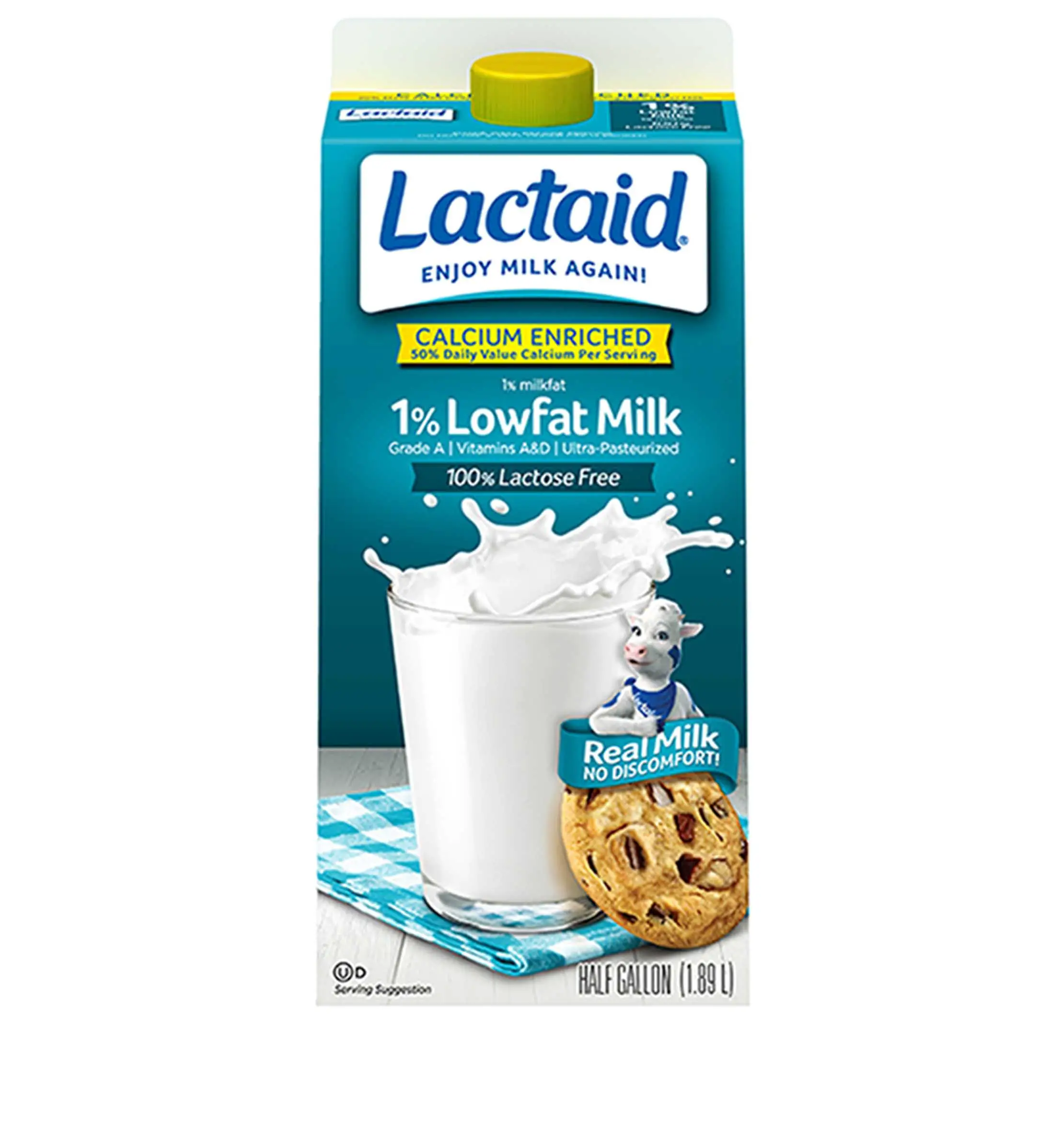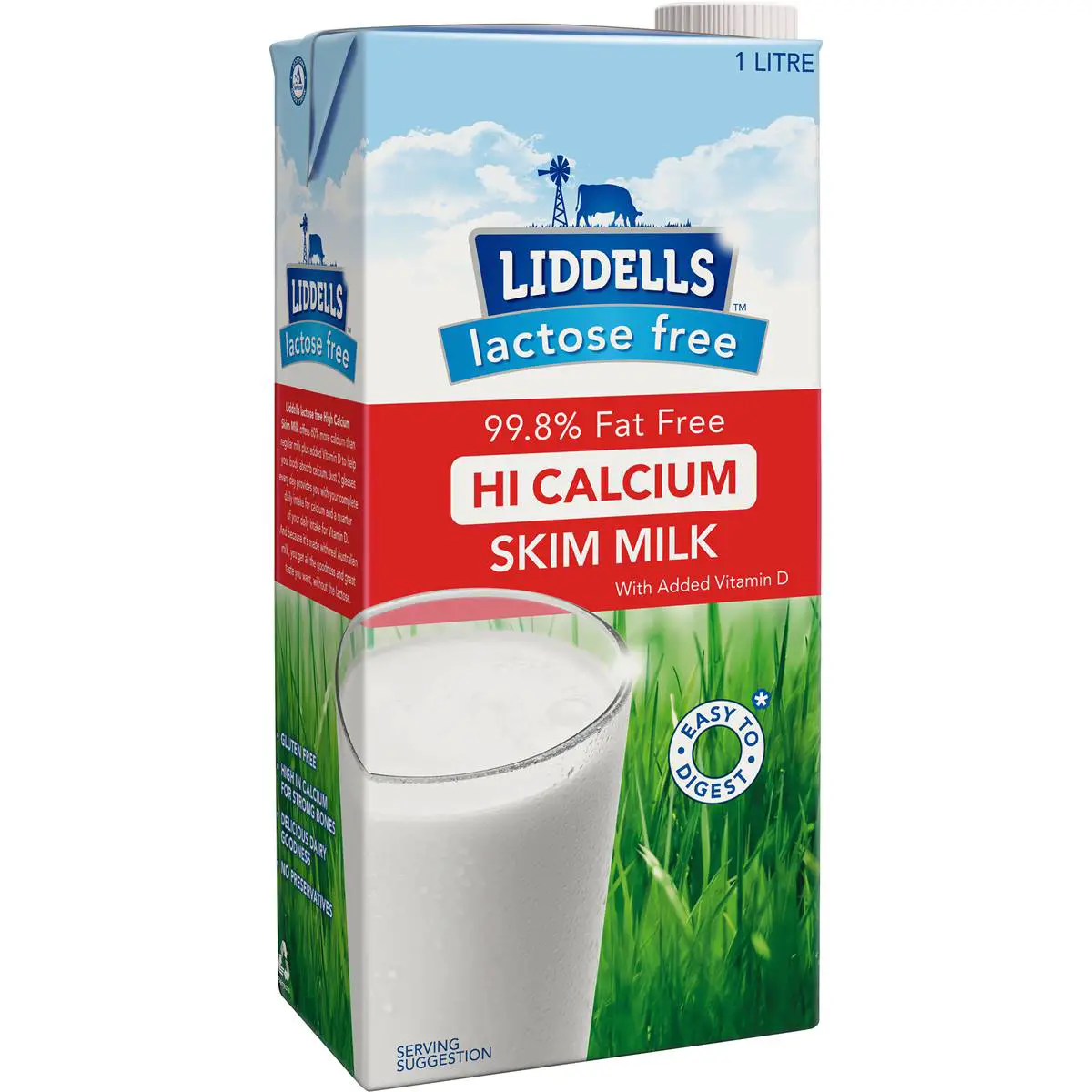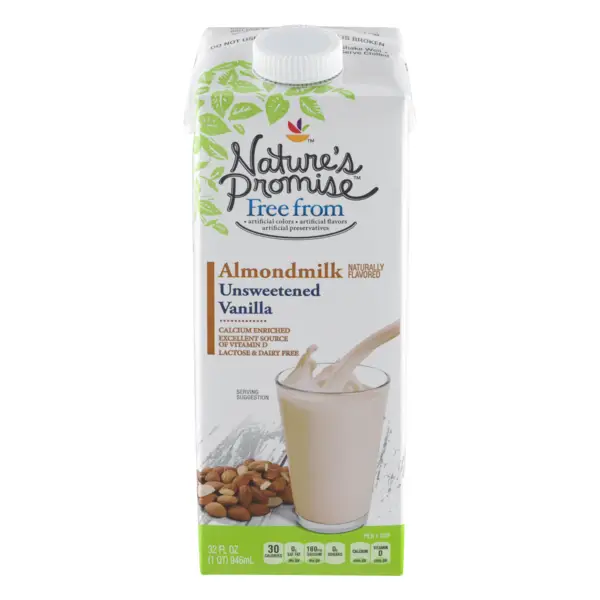Breakfast Foods Offer Hidden Calcium
When youâre lactose intolerant, you have trouble digesting lactose, a sugar found in cowâs milk and dairy products. Eat a good breakfast, even without dairy and you can still get calcium and vitamin D. Bread, juice, and cereal often have added calcium and vitamin D. Some fortified cereals can have more than 1,000mg of calcium in a 1-ounce serving. That’s nearly your entire daily requirement. Ask your doctor about your calcium needs.
Contains The Same Nutrients As Milk
Even though lactose-free milk contains lactase to aid the digestion of lactose, it boasts the same impressive nutrient profile as regular milk.
Like normal milk, the lactose-free alternative is a great source of protein, supplying about 8 grams in a 1-cup serving (
2 ).
Plus, many types are enriched with vitamin D, an important vitamin involved in various aspects of your health but found in only a few food sources .
Therefore, you can switch out regular milk for lactose-free milk without missing out on any of the key nutrients that regular milk provides.
Summary
Like regular milk, lactose-free milk is a good source of protein, calcium, phosphorus, vitamin B12, riboflavin and vitamin D.
What Is Lactose Intolerance
Lactose intolerance is a common problem. It happens when your body does not have enough lactase, which is an enzyme produced in the small intestine. Lactase is necessary to digest lactose the natural sugar found in milk and other dairy products. In the intestines, undigested lactose leads to the buildup of gas. After eating dairy products containing lactose, people with lactose intolerance start to develop stomach cramps and diarrhea.
Lactose intolerance is a common condition that is more likely to occur in adulthood, with a higher incidence in older adults. Some ethnic and racial populations are more affected than others, including African Americans, Hispanic Americans, American Indians, and Asian Americans. The condition is least common among Americans of northern European descent.
Read Also: What Food Has Calcium And Vitamin D
Natural Sources Of Vitamin D3
Vitamin D3 is found most abundantly in fatty fish, and a little bit in egg yolks. Here is a quick chart detailing the amount of vitamin D naturally found in different types of fish and in eggs.
| Food | |
| Sockey or Pink Salmon, cooked | 3 ounces |
| Pacific and Jack Mackerel, cooked | 3 ounces |
| Light Tuna, canned in oil, drained | 3 ounces |
| Sardines, canned in oil, drained | 3 ounces |
| 44 |
Horizon Lactose Free Milk

Horizon Organic Lactose Free Milk offers the same healthy, refreshing organic dairy your family loves – lactose free. Available in half litres.
How Many Ounces In A Starbucks GrandeHow Much Milk is in Starbucks Latte?The basic recipe for Starbucks Latte The components of a hot milk are espresso, frothed milk and milk froth. Starbucks baristas use 2% skim milk unless the customer requests otherwise. Steaming ventilates the milk to create the rich, creamy texture that all milk drinkers know and love.Considering how much milk is there in a Starbucks Large Latte?That said, thats 18 ounces of milk to 2 ounces of espresso – thats a
Don’t Miss: Do Vitamin D Supplements Work
Recommendations For Different Age And Racial/ethnic Groups
The recommendation to consume 3 servings of dairy per day extends to all age and racial/ethnic groups, regardless of the prevalence of lactose intolerance in these groups. Children and adolescents with maldigestion should especially be encouraged to maintain dairy food intake to meet the needs of skeletal growth and to optimize peak bone mass, most of which is attained before the age of 16 . Children who avoid milk ingest less-than-recommended amounts of calcium and may be at increased risk for deficient bone accretion . Cases of severe rickets due to vitamin D deficiency have been described in children who do not consume dairy . In their 2006 statement on lactose intolerance in infants, children, and adolescents, the American Association of Pediatrics stated that restriction of milk and other dairy products is not usually necessary given the available approaches to lactose intolerance . Portions of 48 oz. spaced throughout the day and consumed with other foods may be tolerated with no symptoms by children.
Dairy consumption should also be maintained during adulthood and in the elderly. The prevalence of lactose malabsorption increases with age but symptoms of intolerance reported by individuals with malabsorption decrease over time . Therefore, the elderly should be encouraged to consume dairy foods, especially given their reduced capacity to absorb calcium, to protect them from nutritional deficiencies and to reduce age-related bone loss .
Which Type Of Milk Is Healthiest
Whole, non-fat, reduced, skimmed, almond, soy, rice the grocery store milk aisle keeps expanding. We’ve come far from the days of simply choosing plain or chocolate. The many options can seem overwhelming when all you want is something to pour over your morning cereal or put in your coffee. So, whats the skinny on milk?
Recommended Reading: What Is The Best Vitamin Supplement For Arthritis
When Should I Introduce My Child To Cows Milk
At 12 months old , your child can be introduced to cows milk. Before your child is 12 months old, cows milk may put him or her at risk for intestinal bleeding. It also has too many proteins and minerals for your babys kidneys to handle and does not have the right amount of nutrients your baby needs.
The Effect Of Lactose On Calcium Metabolism And Bone Health In Animal Studies
The in vivo effects of lactose on calcium absorption, bone growth, and BMC were extensively investigated in the 1980s and 1990s. Lactose was shown to enhance calcium bioavailability from a variety of sources at different life stages of development . There are two pathways of calcium transport considered in the mechanism of lactose-promoted calcium absorption: passive transport through all segments of the small intestine and facilitated diffusion in the jejunum. It has been reported that lactose enhanced calcium absorption by increasing calcium permeability in small intestinal villi and lowering the ileal pH in rats . In addition to calcium absorption, lactose, together with calcium, significantly improved recalcification of bones in calcium-deficient rats . Although Shortt et al. reported that lactose alone did not seem to alter bone mass or bone breaking strength in rats, and they demonstrated that lactose protected against the high salt intake-induced bone loss in weaning rats by enhancing calcium absorption. Moreover, in two trials using post-weaning rats and swine conducted by Moser et al. , bone breaking strength was not altered by dietary lactose. However, in the post-weaning rat model, higher levels of lactose in the diet corresponded to increased skeletal calcium content.
Don’t Miss: Who Sells Puritan Pride Vitamins
Is It Ok To Drink Lactose
Milk containing lactase enzymes is safe to drink even if you dont have lactose intolerance. Lactaid milk contains enzymes that break down lactose, the sugar in milk that breaks down into two other sugars, glucose and galactose. You can drink Lactaid milk without harm even if youre not lactose intolerant.
Does Whole Milk Have More Vitamin D Than 2%
4.3/5nonfat milkvitaminswhole milkwithnonfat milk have vitaminvitamin Dvitaminsread full answer
Skim milk, 1 percent milk, 2 percent milk and whole milk all have the same amount of protein, calcium, vitamins and minerals. Vitamin D is added to all of them. Half the calories in whole milk come from fat and one-third of the calories in 2 percent milk come from fat.
Subsequently, question is, how much vitamin D is in a glass of 2% milk? The amount of vitamin D in milkwhole milk : 98 IU, 24% of the DV. 2% milk : 105 IU, 26% of the DV. 1% milk : 98 IU, 25% of the DV. nonfat milk : 100 IU, 25% of the DV.
Secondly, which milk has the most vitamin D?
Cow’s milk, the most commonly consumed type of milk, is naturally a good source of many nutrients, including calcium, phosphorous, and riboflavin . In several countries, cow’s milk is fortified with vitamin D. It usually contains about 115130 IU per cup , or about 1522% of the DV .
What percent is Vitamin D Milk?
Whole milk contains 5 percent of your daily value of vitamin A and 24 percent of your daily value of vitamin D. After fortification, reduced-fat milk contains 9 percent of your daily value of vitamin A and 29 percent of your daily value of vitamin D.
Recommended Reading: What Is Vitamin E Oil
Is Homemade Almond Milk Good For You
Almond milk is a tasty, nutritious milk alternative that has many important health benefits. It is low in calories and sugar and high in calcium, vitamin E and vitamin D. You can use almond milk in any way that you would use regular dairy milk.
Is homemade almond milk high in calories?
One cup of almond milk contains only 39 calories, which is half the amount of calories found in one cup of skim milk . However, not all almond milk is the same. Homemade almond milk or certain brands might contain a much higher number of calories, depending on how many almonds they contain per cup.
Calcium Is Important For Bone Health

Calcium is especially important during adolescence when bone building peaks between ages 12-15 years of age.2 Adequate calcium helps prevent osteoporosis.
Calcium can also protect against lead toxicity by decreasing the absorption of lead in the gastrointestinal tract.3
It is also very important during pregnancy and breastfeeding, as adequate maternal levels protect a growing baby by preventing mobilization of lead stores from maternal bone.4
Whats not clear is if dairy products are the best source of calcium for most people. Despite aggressive marketing by the dairy industry, the verdict is still out as to whether or not milk really builds healthy bones.
Don’t Miss: Where Do You Get Vitamin B
Milk Increases Fracture Risk If
Drinking 3 or more glasses of cows milk daily may increase your risk for fracture.
But consuming other dairy products, such as cheese, cottage cheese, yogurt, or kefir, will not increase fracture risk, it may even be protective.
Why? Because cows milk contains a sugar called lactose that is broken down in our bodies into two sugars: glucose and D-galactose and D-galactose promotes inflammation. Chronic inflammation activates osteoclasts, the special cells that break down our bones. The other dairy products contain little or no lactose, so consuming them does not result in D-galactose formation.
This finding may finally put an end to the debate about whether cows milk is good or harmful for our bones. Over the years, a number of studies have suggested that cows milk might increase fracture risk, but no one knew why.
Some researchers blamed the connection seen between cows milk consumption and increased fracture risk on the vitamin A in fortified milk, but the amount of vitamin A in 3 glasses of milk is at most 5,000 IU, an amount well below the safe upper limit for vitamin A, which is 10,000 IU per day.
In addition, for a number of reasons, vitamin A insufficiency is actually quite common, so the vitamin A provided by cows milk is much more likely to be beneficial than harmful, especially since vitamin A has anti-inflammatory effects.
Is Dairy Free And Lactose Free The Same Thing
While people tend to think of them as interchangeable, the terms “dairy-free” and “lactose-free” actually express two different ingredients. Since lactose is only one component of dairy products, the product may be lactose-free, but it may also contain other dairy components, such as casein or whey.
Recommended Reading: What Is Vitamin B1 Used For
What Does Lactose Free Milk Taste Like
Lactose-free milk tastes like delicious, creamy cow’s milk. The real thing! It is made by adding the enzyme lactase to milk, which turns the drink into a lactose-free beverage. All other innate nutrients are kept lactose-free, which is what FODMAPs want to avoid. And it tastes like milk!
What is lactose free milkWhat are the side effects of lactose free milk? If you don’t have lactase and therefore can’t digest lactose, your digestive system reacts with upset stomach, gas, gas and diarrhea. All carbohydrates in cow’s milk come from lactose. Lactose-free milk is made from cow’s milk, but is processed with the enzyme lactase, so that there is no more lactose.How is lactose free milk is made?Lactose-free milk is made
Does Dairy Cause Cancer
The other frequently raised concern in the discussions of whether dairy foods are good or bad for us is: Do dairy foods increase our risk for cancer?
Colin Campbell, lead investigator in the famous China study and a strong supporter of vegetarianism/veganism, is cited to support the claim that dairy foods increase cancer risk. Campbell, however, has never conducted a human study indicating that dairy foods might increase risk of cancer.
He and his research group have worked for more than 30 years conducting animal experiments to prove the hypothesis that dietary protein not just dairy protein, but all forms of animal protein in excess of ~10% of calories increases risk for cancer.
What Campbell and his team have shown:
Bottom line: Campbells animal research suggests a diet containing more than 10% of calories from animal protein may increase risk of cancer.
Campbells most recent paperis not a study, but a comment on another paperthat reports the results of a study suggesting low dietary protein of any kind, not specifically dairy protein, but a total protein intake of no more than ~9% of dietary calories, may decrease cancer risk.
Also Check: Does Vitamin B1 Prevent Mosquito Bites
Alternative Sources Of Dietary Calcium
In general, I recommend minimizing or avoiding cows milk, depending on how you tolerate dairy. A better option might be organic goat or sheeps milk products if they are well tolerated.
As a reference, the AAP recommends 2 cups of milk or its equivalent for children ages 2-8.19
If you have a diverse diet, I think it is best to focus on calcium from non-dairy foods. The USDA provides a helpful database of foods and nutrients if you want to learn more.
There are plenty of non-dairy sources of calcium. For comparison, 1 cup of milk has about 300 mg of calcium.
Some alternatives include:
- ¼ cup almonds 96 mg
- 1 orange 60 mg
What Is Best Brand Of Lactose Free Milk Cause Gas
The macadamia milk I use is a healthy, lactose-free alternative. Whey protein powder can be a concentrated source of lactose and cause excessive gas problems in many people. Butter and all kinds of creams contain less lactose than milk, but enough to cause problems in people with intolerances or hypersensitivity.
Recommended Reading: Which Prenatal Vitamins Should I Take
How Much Sugar Does Lactaid Milk Have
Available in:
| 0% |
| Sugars 12g |
Which milk is best for weight loss? Cows milk is the best option for most people, as it is an important source of protein and calcium. Those trying to lose weight should switch to reduced-fat or skim milk. People who are lactose intolerant should choose lactose-free milk.
How To Make It

Oat milk is easy to make at home and potentially even cheaper than store-bought options.
Whats more, making your own allows you to choose the ingredients and avoid the additives or thickeners that are found in some commercial products. You can also make it gluten-free by using certified gluten-free oats.
Heres how to make homemade oat milk in just a few minutes:
To enhance the flavor, try adding either a pinch of salt, a little vanilla or cinnamon extract, a few dates, maple syrup, or honey before blending.
You can safely store the oat milk in your refrigerator for up to 5 days.
To avoid a slimy result, use cold water, refrain from squeezing the cheesecloth too hard when draining the remaining liquid, dont soak your oats beforehand, and dont blend them for longer than 30 seconds.
Summary
You can make your own oat milk by blending 1 cup of oats with 3 cups of water and pouring the mixture over cheesecloth into a bottle or jar. It keeps in the fridge for up to 5 days.
Oat milk is an excellent source of many vitamins, minerals, and fiber.
One cup of unsweetened, enriched oat milk by Oatly contains (
Don’t Miss: How To Use Powder Vitamin C
So What About Other Dairy Products Like Cheeses Cottage Cheese Yogurt Kefir Or Lactose
Cheese, particularly hard, aged cheeses, and fermented dairy products contain virtually no lactose, so we dont produce D-galactose from them.
Lactose-free dairy products contain lots of bone-building nutrients. In addition to the calcium, vitamin D and vitamin K2 they contain, fermented dairy products provide us with beneficial bacteria, which produce more vitamin K2 plus vitamin B12 for us, have antioxidant and anti-inflammatory effects, and keep our digestive tract healthy.
Unfortunately, choosing lactose-free milk will not lower your exposure to galactose. Lactose-free should actually be called lactose-predigested milk because thats what it is. The lactose is not removed, it is simply already broken down into its constituents: glucose and galactose. Although some lactose-free milks do have a bit of their lactose removed because when pre-digested, lactose releases glucose into the milk, which results in an excessively sweet taste, these milks will still contain galactose.
Understanding this, its not surprising to learn that in this study, women with a higher intake of cheese or fermented milk products had lower levels of markers of inflammation and oxidative stress, and lower mortality and fracture rates compared to women with low intakes. For each serving of cheese or yogurt they ate daily, the womens rate of mortality and hip fractures was reduced by 10-15%.